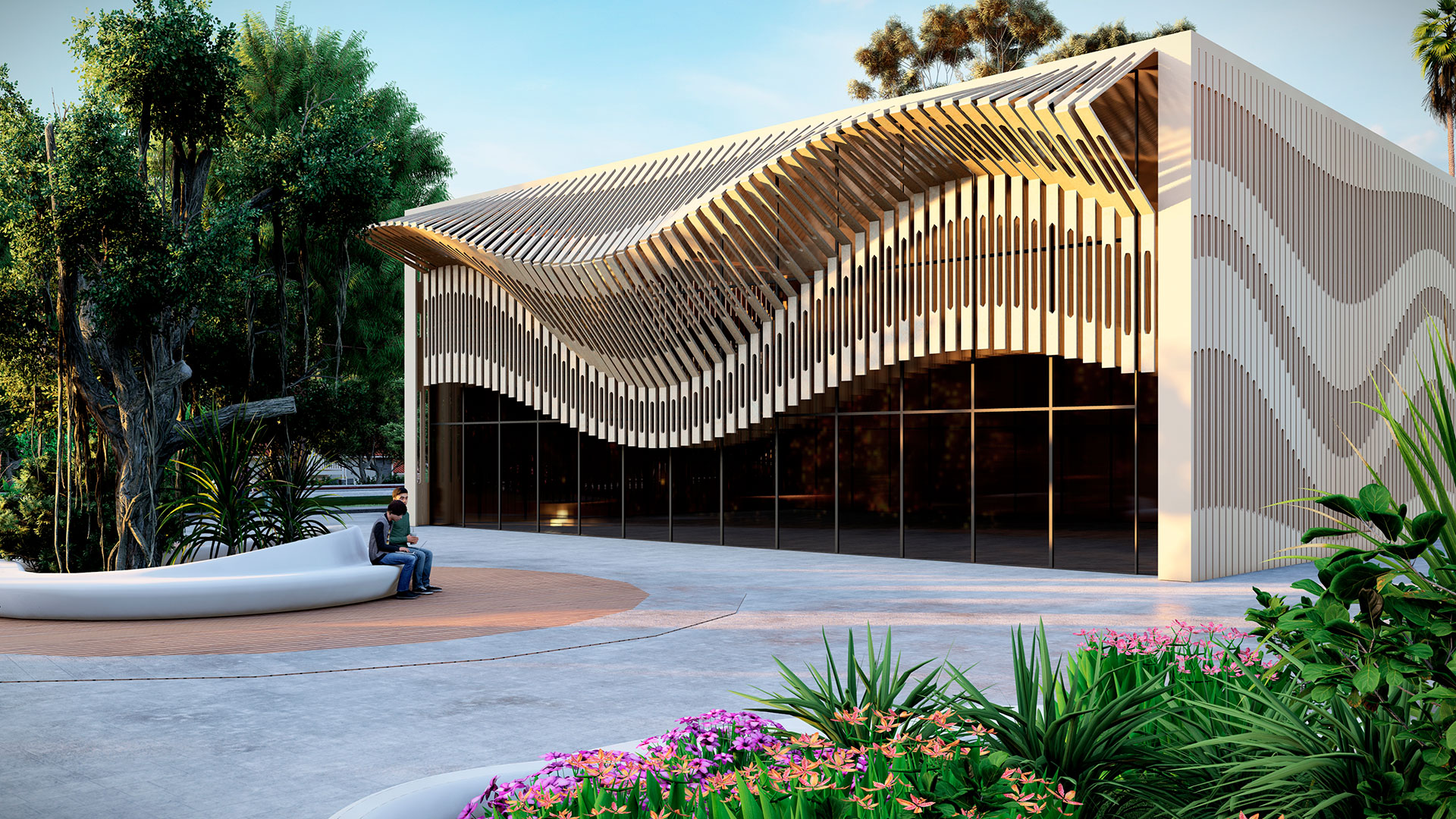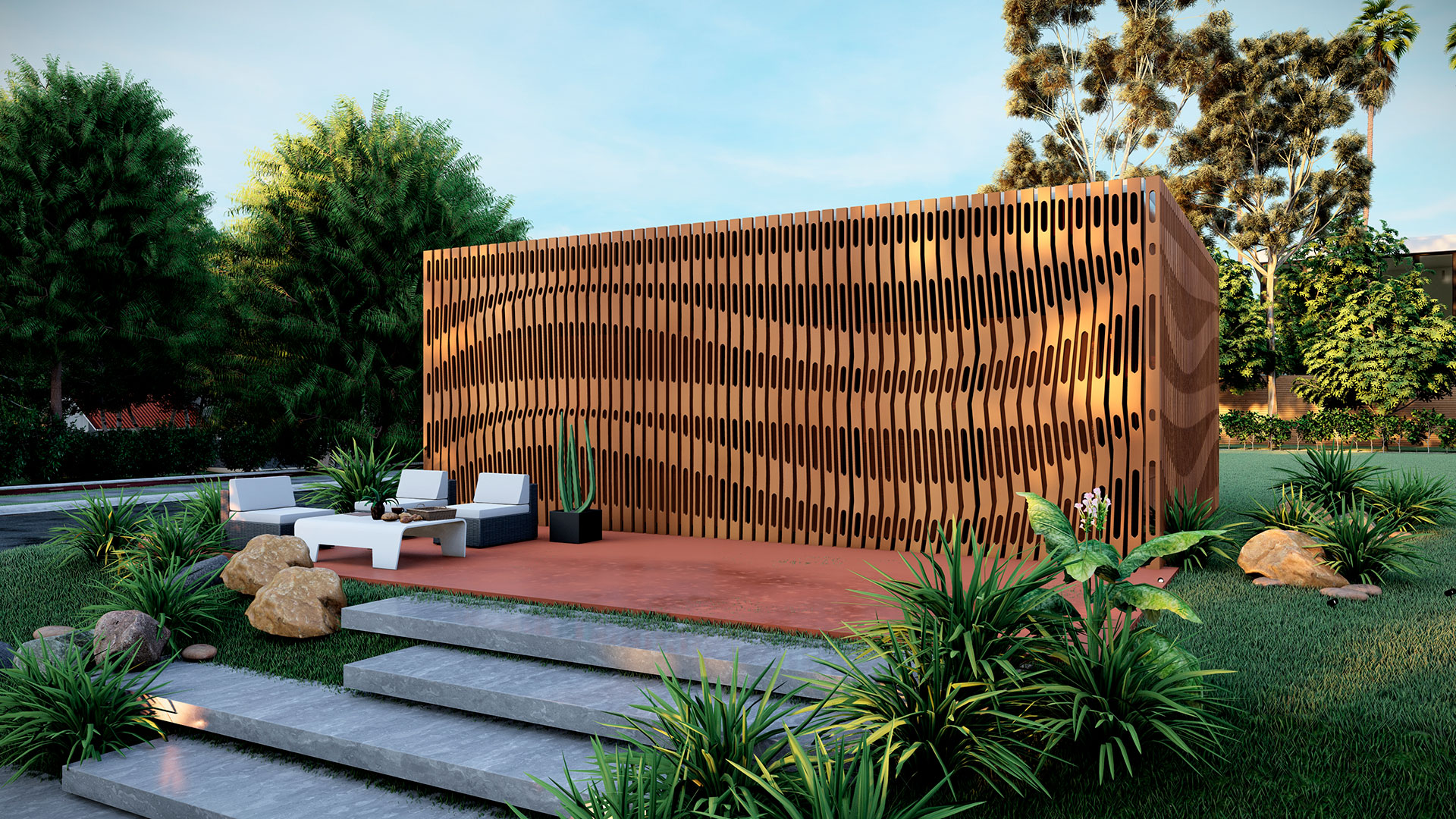The façade is a building’s most important system, ahead of structures, installations and enclosures, not only because it defines the building’s visual appearance, but also because it is a determining factor in its energy consumption.
Our architectural project this month is a great example of how a well-designed façade is decisive for a building’s thermal regulation and therefore, becomes a passive element that contributes to energy savings. Thus, our façades not only optimise the habitability of the building, but also substantially improve its energy efficiency.
We present two proposals: the first corresponds to a building with a façade that folds out from a sinusoidal curve; in the second one, the same system is applied to a MagiCube prefabricated single-family house, whose folding is made from a straight line. As can be seen in the videos, the modules move along the Z-axis to fold and unfold. In the case of the MagiCube single-family house, the system is also used to create a covered porch.
These façades, inspired by kinetic art, change their appearance as the modules move by means of a system of tensors. The result is a dynamic building that transforms visually and opens or closes to the outside at will. Our façade system also adapts to the weather at any time of the year, to absorb solar radiation or to facilitate light air currents that ventilate the interior in a natural way.
In terms of cost, we have to consider that it is not necessary to move large sections of the façade, but rather the movement of small modules, as seen in the videos, is sufficient to achieve the desired kinetic effect. Furthermore, the availability of new materials and technologies on the market, which are constantly advancing, simplifies the implementation of this type of façade and makes them affordable.







